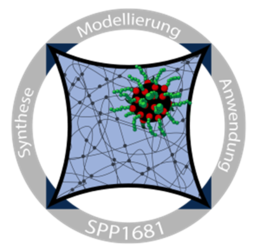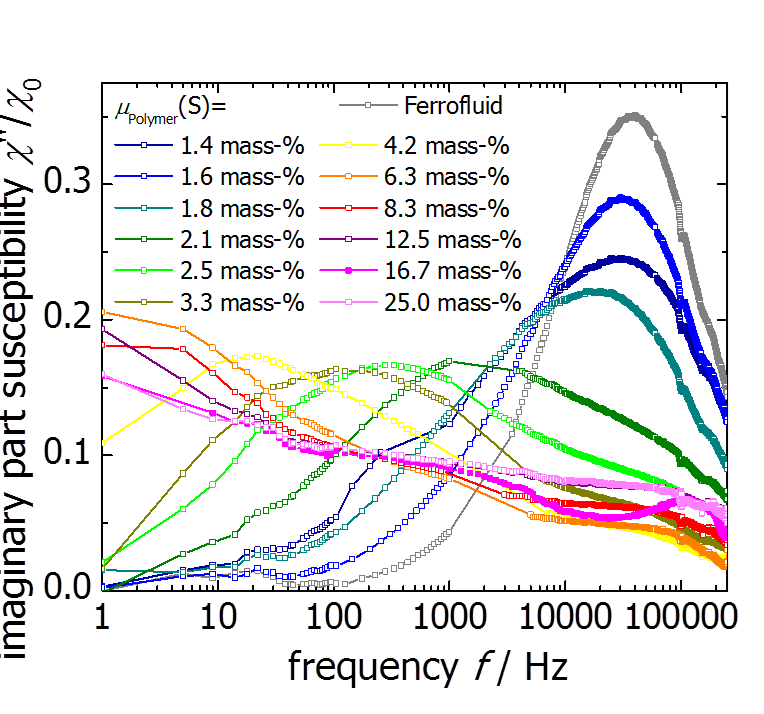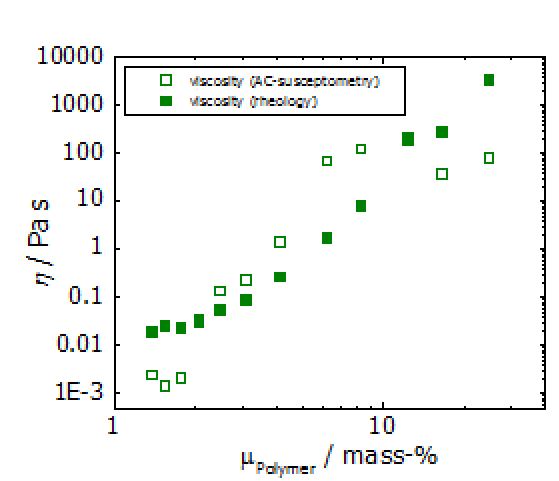Nanorheology
Nanorheology, a technique to investigate the rheological properties of soft matter by means of colloidal tracer probes, is achieving recent advancement. One can distinguish between passive and active nanorheological methods. In passive nanorheology, the inherent thermal energy is used to move the tracers1,2. In active nanorheology, the embedded probe is actively driven within the material, either in oscillatory or steady motion. With measuring the motion of particles in polymer solution in oscillatory magnetic fields by use of AC-Susceptometry (Abb. 1) we get information about the local viscosity and the particle-matrix-interactions. The values are compared with the bulk viscosity (Abb. 2) determined by macroscopic rheology. Another aim is the calculation of the complex viscosity or the complex shear modulus out of the measuring data in order to investigate the dynamic rheological properties of the samples


